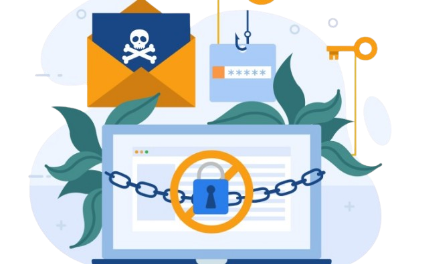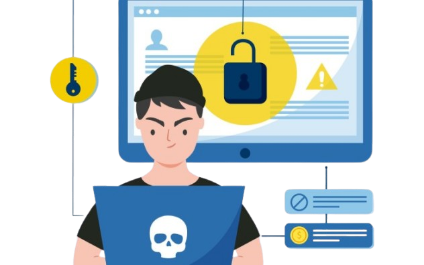- Clicking malicious links
- Downloading infected attachments
- Sharing sensitive login credentials
- Authorizing fraudulent financial transactions
- Phishing emails are the starting point for 94% of cyberattacks.
- To enhance their efforts, cybercriminals are now employing AI-powered phishing tools that allow them to tailor their attacks and evade spam detection systems.
- The rise of remote and hybrid work arrangements has heightened the risk, as employees operate beyond the protection of secure corporate networks.
Phishing Protection Best Practices:
Stop Hackers Before They Strike
Stop Hackers Before They Strike
As of 2025, phishing continues to pose a significant and pervasive threat in the realm of cybersecurity. Cybercriminals are constantly honing their methods to deceive employees, acquire sensitive credentials, and breach organizational defenses. Even one effective phishing attempt can lead to considerable financial losses, data compromises, harm to reputation, and potential regulatory penalties.
Fortunately, by implementing effective phishing prevention strategies, organizations can markedly diminish their vulnerability and thwart hackers before they can execute their plans.
What Is Phishing?
Phishing constitutes a type of social engineering attack in which cybercriminals masquerade as reputable organizations — such as financial institutions, software vendors, or corporate leaders — to entice individuals into divulging sensitive information.
These types of attacks frequently occur through various communication channels, including email, SMS (commonly referred to as smishing), phone calls (known as vishing), or messages sent via social media platforms.

Why Phishing Protection Is Critical in 2025
Without a proactive phishing defense strategy, even a single mistake by an employee can open the door to catastrophic breaches. Visit this link to learn more.
Phishing Protection Best Practices for Businesses
Implement Email Authentication (SPF, DKIM, DMARC)
To safeguard against email spoofing and phishing, businesses must implement SPF, DKIM, and DMARC for their domains. SPF designates authorized sending servers, DKIM verifies message integrity, and DMARC integrates these protocols while providing reporting insights. Begin with a monitoring policy (p=none) and progressively transition to quarantine and reject settings to effectively combat fraudulent emails and uphold your brand's reputation.
Use Advanced Email Security Solutions
Implementing advanced email security measures, such as Secure Email Gateways (SEG) or cloud-based filters, effectively prevents phishing emails from reaching employees. These modern solutions leverage AI and machine learning to identify suspicious links and attachments, while sandboxing safely tests potentially harmful files. Additionally, third-party tools can augment the built-in protections of Gmail and Microsoft 365, providing multiple layers of defense.
Train Employees on Phishing Awareness
Human error is a significant threat, making ongoing employee training essential for phishing prevention. Companies should implement phishing simulations, educate staff on identifying suspicious links and email addresses, and foster a blame-free environment for reporting incidents. User-friendly reporting tools, brief refresher courses, and micro-learning modules enhance awareness, creating a company culture where all employees serve as the first line of defense.
Enable Multi-Factor Authentication (MFA)
Multi-Factor Authentication (MFA) enhances security by necessitating additional verification beyond a password. This safeguards accounts even if credentials are compromised. Businesses are advised to utilize app-based authenticators or hardware keys instead of SMS, apply MFA to email, VPNs, and cloud services, and enforce conditional access policies to shield sensitive systems from unauthorized access.

Monitor and Review Security Logs
Implementing proactive monitoring is essential for preventing phishing attacks from inflicting harm. Organizations ought to analyze login activities for any irregularities, monitor DMARC reports to identify unauthorized senders, and utilize Security Information and Event Management (SIEM) tools to consolidate and scrutinize log data. By setting up automated alerts, IT teams can be promptly informed of any suspicious activities, enabling them to respond swiftly and mitigate risks associated with potential phishing threats.
Keep Software and Systems Updated
Numerous phishing attacks are successful due to the exploitation of vulnerabilities in outdated software. It is essential for businesses to consistently update their operating systems, browsers, plugins, and email clients, and to activate automatic updates whenever feasible. Implementing robust endpoint security solutions that offer real-time protection against phishing and malware can serve as an additional layer of defense. By ensuring that all systems are current, organizations can greatly diminish the likelihood of being compromised by phishing threats.
Establish an Incident Response Plan
Despite robust defenses, companies remain vulnerable to phishing attacks, highlighting the necessity of a response strategy. Employees must be trained to promptly report suspicious communications, while IT teams should be prepared to isolate affected accounts, reset passwords, and conduct malware scans. Establishing a clear communication protocol with employees, customers, and regulators is crucial for effective damage control, transparency, and regulatory compliance during phishing incidents.